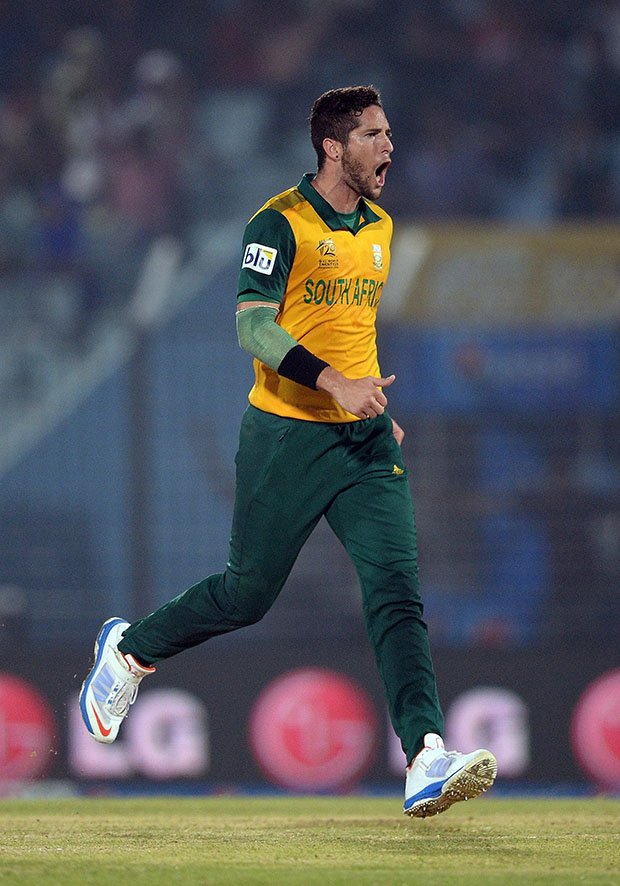To watch Wayne Parnell in the second Test against Australia in February was to see a glimpse of the player he should be, writes Ryan Vrede. There had been a four-year gap between appearances in the Test side, and in three balls he made a statement about the depth of his talent.
The first saw Alex Doolan, who had mounted a determined resistance, dismissed after Parnell found his bat’s edge. After the second ball, a standard effort outside off-stump, was left alone by Shaun Marsh, the third sent the first-Test centurion packing. Just like that the Test was transformed.
The 24-year-old came back for another spell late in the day and proceeded to nick off Nathan Lyon, only to see JP Duminy grass the ball at gully. In the context of the game, his first spell was significant and contributed greatly to a victory that saw the series levelled. In the context of his career, it was even more so. He’d out-bowled the world’s top four seamers at a stage in the game when the wicket and climatic conditions offered very little to assist their craft. The real Parnell battered the impostor, who had taken to the field on more occasions than we’d care to remember, into submission.
It spoke of his immense promise, but at the same time it was a reminder of how far he had ventured from even the base predictions of how his Test career would develop. This, remember, was one of the best junior international players on the planet at one stage, adept with bat and ball, the captain of the SA U19 side that lost in the final of the 2008 World Cup to an Indian team that would supply a string of players, including the gifted Virat Kohli, to their senior national team in the years that followed. He played senior provincial cricket at 17, and did so with efficiency and skill that belied his age. He later became the youngest ever player to be awarded a national contract. Short of being a child prodigy, Parnell had consistently exhibited exceptional talent.
Yet talent is nothing if not combined with the maturity needed to negotiate the challenges faced in the world that talent transports you to.
Privately, when his emotional intelligence is fully developed, he may reflect on an international debut at 19 as being too soon.
Very few at that age are ready to be elevated to that level of competition with and against players whose pictures decorated their walls, to be thrust into the national consciousness, to have their aptitude that closely examined and to treat success and failure with equal perspective. The rise of the IPL and its ability to make instant millionaires complicated Parnell’s development (his first IPL contract, with the Delhi Daredevils, was worth $610 000, or R6 million). His background is a modest one, so, swept away at the gross and almost overnight swelling of his bank balance, Parnell lived large, collecting material things at a far greater rate than he was wickets and runs, and socialising with crowds who were less concerned about his professional wellbeing than they ought to have been.
Parnell, of course, is primarily culpable in this case, having initially not had the self-discipline to moderate this aspect of his life. He asserts his conversion to Islam changed all this, but that claim’s credibility was tested when he was arrested and charged for testing positive for recreational drugs after a raid on a party in Mumbai in May 2012. He was released on bail and would deny all charges, explaining that he was simply in the wrong place at the wrong time. The case continues, and while he maintains he isn’t concerned about the outcome, he would no doubt want a speedy resolution to free him from its burdensome effect.
Parnell should want every conversation about him to be linked to his performances on a cricket field and preferably feature discourse about his value thereon. If that discourse can become increasingly positive in tone and content, even better.
His ODI career had started brightly. He impressed in the 2009 series against Australia, before excelling in the World Twenty20 later that year. At that point, it appeared the Proteas had unearthed a gem, a raw one certainly, but one capable of making the step up to Test cricket. He debuted in the whites in 2010 at the Wanderers against England, claiming the crucial scalps of Andrew Strauss and Kevin Pietersen in the second innings. Selection for the tour of India followed, but the second Test in Kolkata proved to be a significant one. He went wicketless in the first innings, conceding 103 runs at a click over five per over. He was among three bowlers to top the 100-run mark, but was deemed the most expendable and wouldn’t feature again until his star turn in Port Elizabeth earlier this year.
The road back has been tough for Parnell, but his perseverance and increasingly stellar performances for the Warriors, especially in four-day cricket, should be reason for optimism.
Personalised sessions with former Proteas bowling coach Vincent Barnes at the High Performance Centre improved him technically, and contributed to slowly eradicating the inconsistency that had marked his performances.
‘I found that he was closing off and falling away with the long stride, and his wrist was in a poor position and so was his body. So he was angling it across the right hander and losing a bit of pace. He was also running in way too fast,’ Barnes told the Daily Maverick.
‘With a little bit of rope and cones, I straightened him out a bit. Parnell bowled into the pads a lot, so we worked on bowling across the right hander. I try to teach them that the secret is to bowl as if the ball is not going to swing. Once [he has] settled, [he] can start working on making the ball swing.’
But the most critical growth for Parnell will be mental and time will judge this facet of his development. Players of his talent will improve technically rapidly if they desire to, but often show less of a willingness to discipline themselves mentally, particularly in day-to-day decision-making. It is the curse of talent.
Time isn’t on his side, especially with a clutch of gifted suitors vying for his position in all three formats of the game. Nobody can make Parnell want to be the best version of himself. That will come from him alone. He has the opportunity to determine what his story will read like when it concludes.
This feature appears in SA Cricket magazine.







